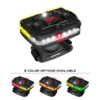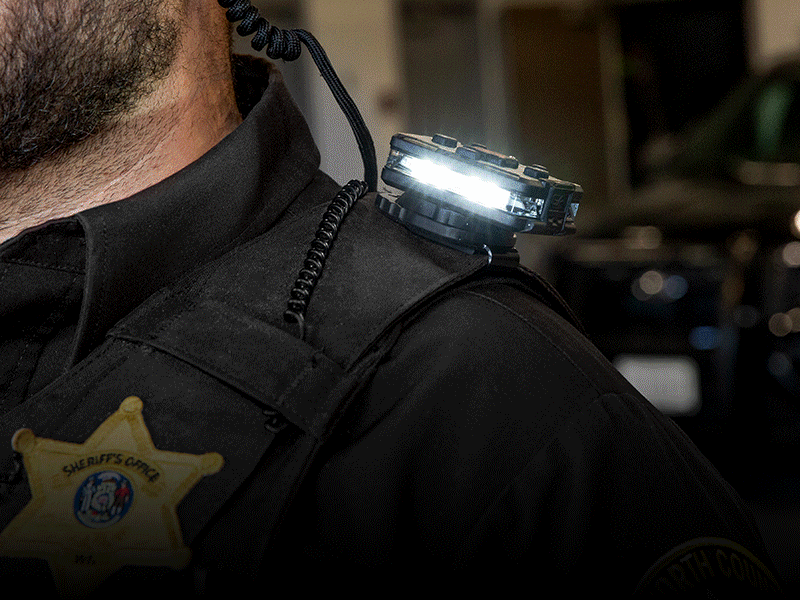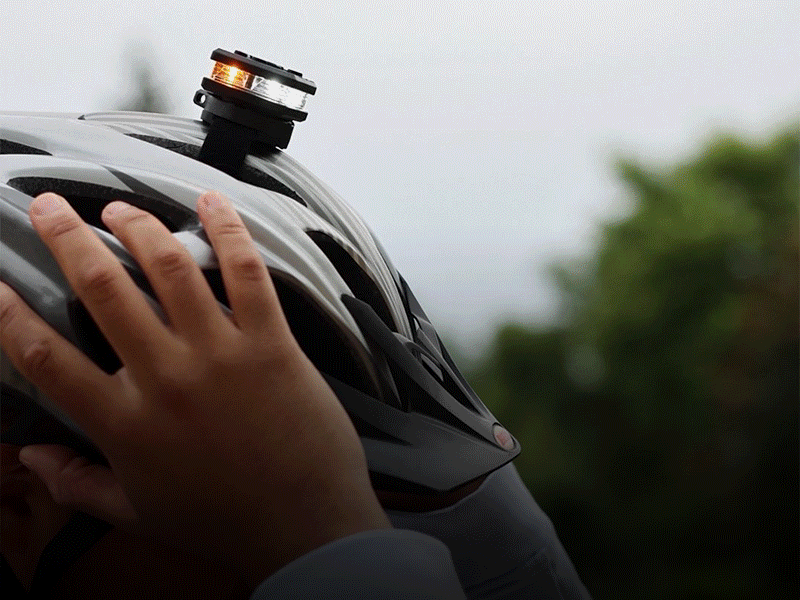Iowa Emergency Vehicle Light State Statutes
Iowa Emergency Vehicle Light State Statutes
Emergency vehicles are vital across the country for transporting people or equipment following an accident, cleaning up after an emergency, and more. No matter what type of vehicle it is, when long as it fits within an emergency or danger vehicle classification, certain light rights are allowed in the states.
The state, however, has different lighting laws which also require certain emergency vehicles to have certain colored lights, certain flashes, and sirens. If a corporation or vehicle wants to purchase warning lights in the state of Iowa, it is important to consider the caution and emergency lights laws to prevent fines or other legal issues.
In this article we will address the different laws for every type of emergency or warning vehicle commonly found in Iowa. When we look over each type, we’ll also address the need for sirens, some colored lights, and what kind of flash the lights need to comply with this state’s laws.

Emergency Vehicles Defined
The first thing that needs to be addressed before looking at the different types is the requirements required to classify a vehicle as an emergency vehicle in the state of Iowa. Every emergency vehicle is considered to be a police, EMS, fire, or any other vehicle that handles emergency situations, according to their state statute of 321-1-1-6.
The emergency vehicles must be owned by the United States or a subdivision, municipality, or the Department of Transportation in Iowa, in order to comply with the state laws. All emergency vehicles should also be registered with Iowa DoT to ensure that all laws regarding emergency lights are complied with.
Police Car Lights
A police vehicle is any marked or unmarked car that is registered within the state of Iowa with city and state police departments. Such cars can mean anything on the roads from the cars of county sheriffs to city police cars to the vehicles of state trooper.
Pursuant to Statute 321-423-3(3), in emergency situations, any police vehicle on the road is allowed to use both red and blue police lights. The blue lights on the car need to be mounted just over the car’s passenger side, and the red lights should be placed on the car’s driver side. There are no siren provisions in the state of Iowa, even with the lights.
Fire Truck Lights
Every Iowa fire truck is a truck that is registered with fire departments in the state or city. The fire trucks should have a standard ladder as well as a siren which can be turned on in case of a serious emergency. When it comes to lighting for fire trucks, Iowa fire trucks have a different kind of light law.
All fire trucks in the state of Iowa are required to use blue flashing lights on the vehicles, as noted in the state statute of 321-423-2-3. In addition, fire engines must be licensed with Iowa DoT.
Volunteer Fire Truck Lights
Similar to fire trucks, volunteer fire trucks are trucks registered with a volunteer fire department that helps the city fire departments fight fires across the city and county areas. The volunteer fire departments have normal vehicles but are registered as a volunteer fire truck with the Department of Transportation.
Any volunteer fire department trucks should use the same kind of lights as a fire truck according to the Iowa state laws. This would be blue flashing lights as long as the vehicle is a volunteer fire truck registered with the DoT.
Ambulance Lights
An ambulance is a vehicle which transports people to the nearest hospital for treatment from the scene of an accident or emergency. Ambulance vehicles are equipped with various medical equipment as well as lights and sirens for emergencies. Lights for an ambulance and EMS vehicles, as well as how they can be used, still exist laws.
According to the Iowa ambulance statute, 321.423.4.2.f, these vehicles are required to have white lights that flash to warn other drivers to yield on the emergency road. The Iowa State Ambulance Act does not mandate that the lights and sirens go at the same time.
Tow Truck Lights
Tow trucks are used all over the world to shift a vehicle from one location to the next from the site of an emergency accident. However, tow trucks tend to be large and bulky on the road, which is why they are equipped with front-facing tow truck caution lights to warn other drivers on the road in their presence.
In Iowa, tow trucks must use amber lighting on their vehicles. This falls within the Iowa emergency light statute category of 321-423-6. To warn the other drivers on the road the lights on the tow truck should be flashing lights.
Construction Vehicle Lights
A construction vehicle is any type of vehicle on the road that is a construction company vehicle, particularly when it comes to building along the highways, roads, and interstates. Building vehicles often sit on the side of the road, even in high traffic, which is why lighting is important.
A construction vehicle’s caution lights are similar to the tow truck lights and fall under the same Iowa state emergency vehicle light statute. In order to make other drivers aware of the vehicles on the road or the side of the road at a construction site, construction vehicles should have amber lights on the top that are flashing.
Utility Vehicle Lights
Utility vehicles can be a variety of vehicles but they are usually in the form of a power truck. These vehicles need caution and warning light to alert the truck’s traffic and its seriousness, particularly in the case of an emergency. The lights should be amber, 360-degree revolving lights along with 100-candle power.
Pilot Vehicle Lights
Pilot vehicles are any type of on-road vehicle that either guides traffic through a construction site during road work or a vehicle that guides a wide load through the roads. Pilot vehicles are important to alert traffic to oncoming loads, or to the construction’s seriousness. Therefore lights are so critical on a pilot vehicle.
On a pilot vehicle the caution lights have their own specifications. First, they should be a color-shaped light amber. Second, the light should be 7″ high and 7″ round. The lights should also have 360-degree rotation in the light, and should have a brightness of at least 100-candlepower. There should be no smaller lights on the car unless we use a strobe light. The towed vehicle should also feature lights.
Security Vehicle Lights
Any security vehicle is a vehicle that rotates around a patrol site to protect the site. This may include university campuses, malls, or large plants. Compared to a police car, a security vehicle often has a alert and warning light.
Security vehicles do not come under a police vehicle, and they should use the same light of caution as a utility vehicle or a pilot vehicle with an amber light that flashes with 360-degree rotation and 100-candle power. To comply with the Iowa state laws, the light should also be 7-inch round and 7-inch high.
Conclusion
State laws vary for each state, and cautionary, warning laws are used. And strobe luminaries are no exceptions. The light laws for each type of emergency vehicle in the State of Iowa differ slightly from one type of vehicle to the next. The difference between a normal vehicle and an emergency vehicle is one of the most important things to recall.
An emergency vehicle in the state of Iowa is any type of vehicle required in an emergency situation which may include police cars, tow trucks, construction vehicles, and fire trucks. The state of Iowa mandates that no sirens be on at the same time as the lights of caution.
Warning lights are important, particularly for vehicles used in emergency situations or after accidents. These vehicles which are equipped with the lights are put in place to alert other drivers on the road of future loads, emergency situations, or the need to make room for the vehicle to pass through. Warning lights do however have laws that should be followed regardless of what.
Regardless of the situation, caution lights may comply with the laws of individual states, regardless of which vehicle is in. The best way to ensure that any vehicle complies with state law is to check the specific laws regarding certain emergency vehicles and the light laws that are required with the State Department of Transportation. It is important to adhere to these laws to ensure that no fines or other issues are imposed on an emergency vehicle due to a compliance error involving the lights on.
For more information on what lights are available to you, please call your State Highway Patrol office at: 515-725-6090
*Please note that these numbers are what we can currently find, and the numbers may have changed since this listing.





